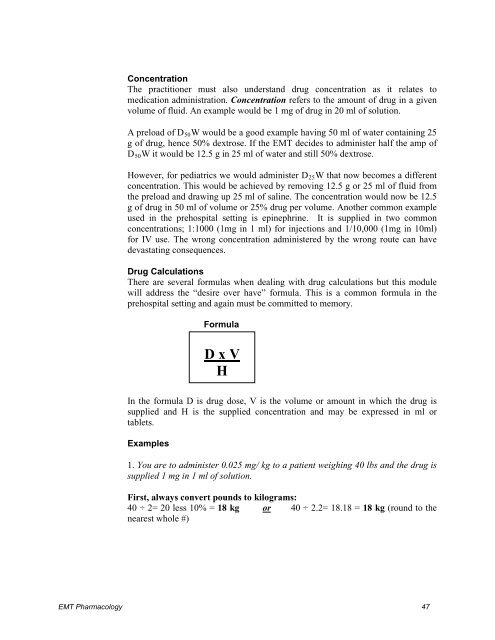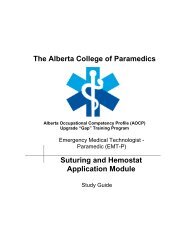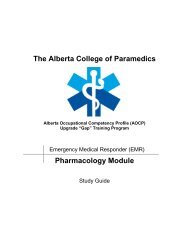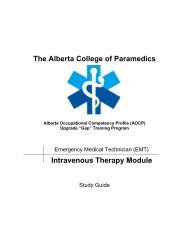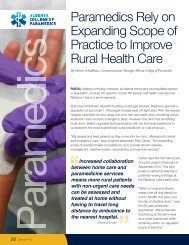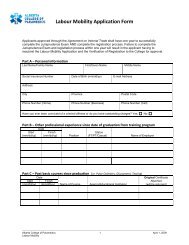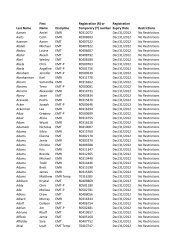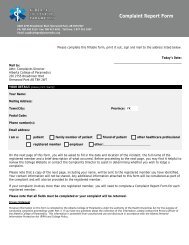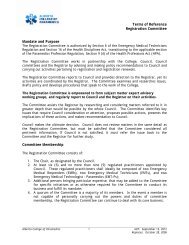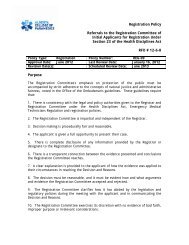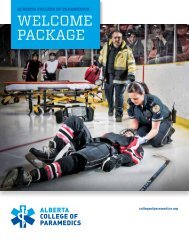Pharmacology - Alberta College of Paramedics
Pharmacology - Alberta College of Paramedics
Pharmacology - Alberta College of Paramedics
Create successful ePaper yourself
Turn your PDF publications into a flip-book with our unique Google optimized e-Paper software.
ConcentrationThe practitioner must also understand drug concentration as it relates tomedication administration. Concentration refers to the amount <strong>of</strong> drug in a givenvolume <strong>of</strong> fluid. An example would be 1 mg <strong>of</strong> drug in 20 ml <strong>of</strong> solution.A preload <strong>of</strong> D 50 W would be a good example having 50 ml <strong>of</strong> water containing 25g <strong>of</strong> drug, hence 50% dextrose. If the EMT decides to administer half the amp <strong>of</strong>D 50 W it would be 12.5 g in 25 ml <strong>of</strong> water and still 50% dextrose.However, for pediatrics we would administer D 25 W that now becomes a differentconcentration. This would be achieved by removing 12.5 g or 25 ml <strong>of</strong> fluid fromthe preload and drawing up 25 ml <strong>of</strong> saline. The concentration would now be 12.5g <strong>of</strong> drug in 50 ml <strong>of</strong> volume or 25% drug per volume. Another common exampleused in the prehospital setting is epinephrine. It is supplied in two commonconcentrations; 1:1000 (1mg in 1 ml) for injections and 1/10,000 (1mg in 10ml)for IV use. The wrong concentration administered by the wrong route can havedevastating consequences.Drug CalculationsThere are several formulas when dealing with drug calculations but this modulewill address the “desire over have” formula. This is a common formula in theprehospital setting and again must be committed to memory.FormulaD x VHIn the formula D is drug dose, V is the volume or amount in which the drug issupplied and H is the supplied concentration and may be expressed in ml ortablets.Examples1. You are to administer 0.025 mg/ kg to a patient weighing 40 lbs and the drug issupplied 1 mg in 1 ml <strong>of</strong> solution.First, always convert pounds to kilograms:40 ÷ 2= 20 less 10% = 18 kg or 40 ÷ 2.2= 18.18 = 18 kg (round to thenearest whole #)EMT <strong>Pharmacology</strong> 47


